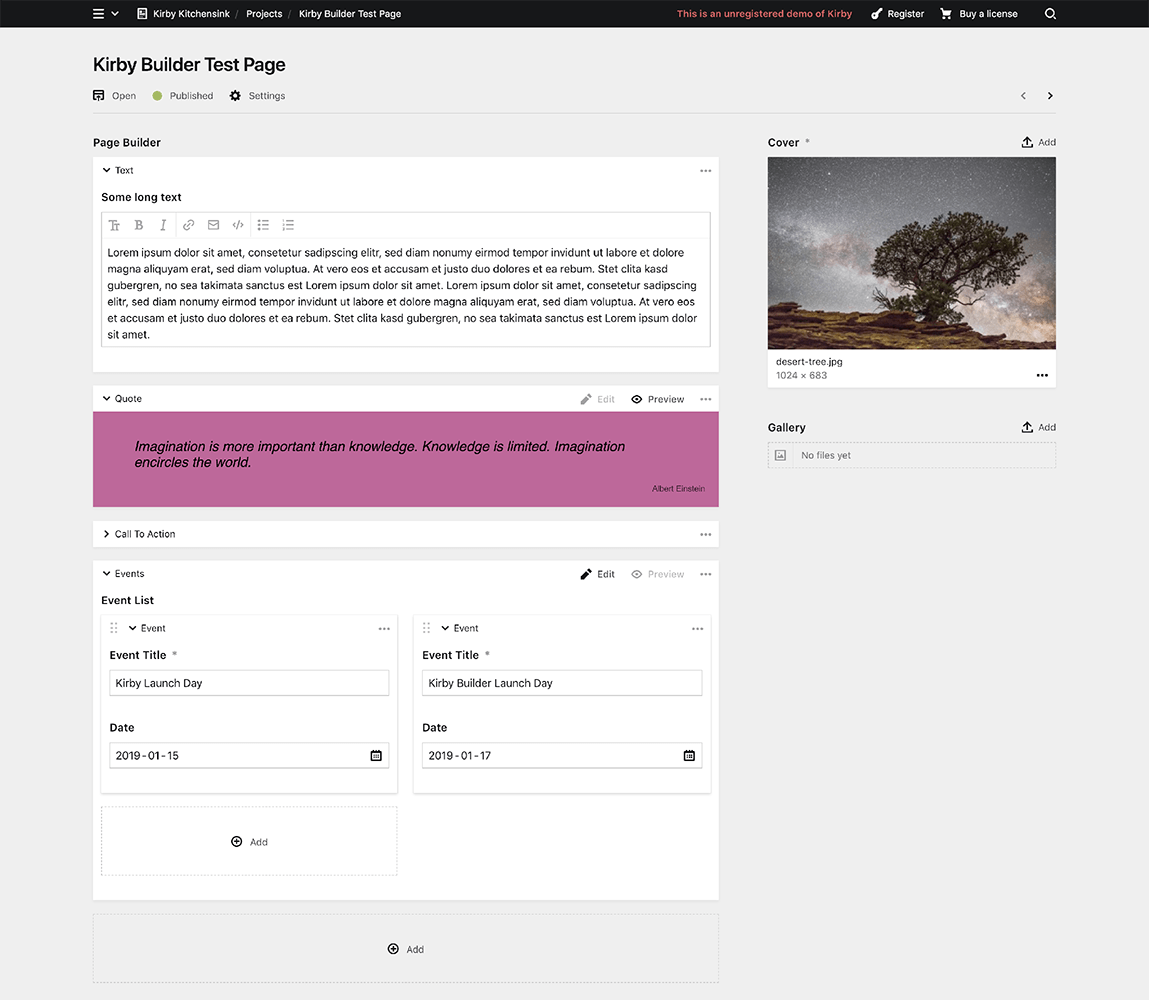Download the PHP package timoetting/kirby-builder without Composer
On this page you can find all versions of the php package timoetting/kirby-builder. It is possible to download/install these versions without Composer. Possible dependencies are resolved automatically.
Download timoetting/kirby-builder
More information about timoetting/kirby-builder
Files in timoetting/kirby-builder
Package kirby-builder
Short Description This versatile plugin for Kirby CMS (v3) lets you predefine content blocks with different field sets that can then be added, edited and arranged inside Kirby's panel.
License MIT
Informations about the package kirby-builder
Kirby Builder (deprecated)
⚠️⚠️⚠️
This Plugin is deprecated and is no longer maintained, as its functionality can be replaced by the native Blocks Field and Layout Field
⚠️⚠️⚠️
This versatile plugin for Kirby CMS (>= v3.0.1) lets you predefine content blocks with different field sets that can then be added, edited and arranged inside Kirby's panel.
The legacy version for Kirby 2 can be found under this branch.
Commercial Use
Kirby Builder can be used in so many different extents. You know best how big the value is that you get out of this plugin. Please pay what (and if) you want.
Another way to support this plugin is to buy a Kirby Licence via this affiliate link with no extra costs for you. You need that licence anyway, right? :wink:
Preview

Installation
Git
From the root of your kirby project:
Composer
Direct Download
Alternatively you can download the zip file, unzip it's contents into site/plugins/kirby-builder.
Example Blueprint Structure
Template Usage
There are different ways to use the builder field inside a template. A clean approach for this is to use different snippets inside site/snippets/blocks/ that have the same file name like the field set names in the blueprint. In this case, we use the same snippet that we used for the preview inside the panel.
The toBuilderBlocks method converts the builder field to a Kirby Collection which makes it possible to use Kirby's chaining syntax. Under the hood it is an alias for the toStructure method.
The quote snippet, for example, could then be rendered by this snippet:


